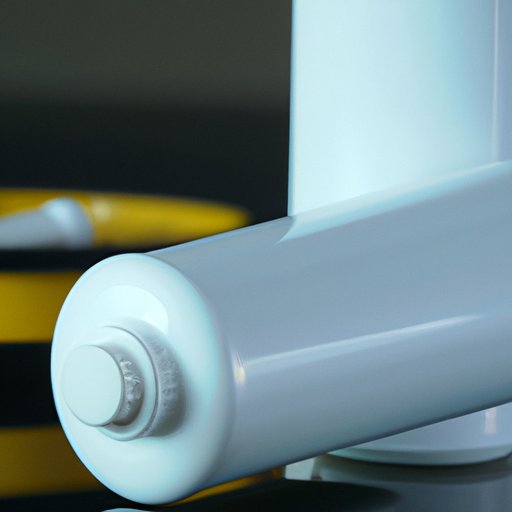
Introduction
Battery acid is a corrosive and potentially harmful substance that is commonly found in cars and other electronic devices. Accidental spills or leaks can cause damage to surfaces, as well as pose a risk to one’s health and safety. It’s crucial to clean battery acid spills promptly and thoroughly, using the correct methods and equipment, to avoid any harm or damage. This article provides a comprehensive guide for cleaning battery acid, including safety tips, prevention methods, specialized cleaners, and quick cleaning hacks.
Step-by-Step Guide for Cleaning Battery Acid
The first step in cleaning battery acid is to identify the affected area and gather the necessary materials. Some common household items that can be used for cleaning include baking soda, vinegar, hydrogen peroxide, gloves, goggles, and a clean cloth or sponge.
The next step is to ensure that the area is well ventilated and that any nearby electrical devices are turned off. It’s also important to wear gloves and goggles to protect oneself from potential harm.
If the battery or device is still in use when the spill occurs, it should be switched off and removed from the area before cleaning begins. Once the area is clear, the following steps can be taken to clean battery acid off various surfaces:
- Spread baking soda or a baking soda-water mixture over the affected area. The baking soda will help to neutralize the acid and prevent further damage.
- Using a clean cloth or sponge, gently scrub the affected area. Avoid using excessive force or abrasive materials, as this can cause damage to the surface.
- Rinse the area with water and allow it to dry thoroughly.
- If the spill occurred on clothing, it is recommended to soak the affected clothing in a mixture of water and baking soda for 30 minutes before washing it.
Safety Tips and Best Practices
Handling battery acid can be dangerous, and there are several safety precautions and best practices that one should follow to ensure their safety and minimize the risk of harm. Some of these precautions include:
- Wearing gloves and goggles to protect oneself from potential harm.
- Ensuring that the area is well-ventilated and that any nearby electrical devices are turned off to avoid any sparks or fires.
- Switching off and removing the battery or device from the area before cleaning begins.
- Disposing of any cleaning materials, such as the sponge or cloth, in a separate trash bag and sealing it tightly before disposing of it in the garbage.
Preventing Battery Acid Spills
Prevention is key when it comes to battery acid spills. There are several techniques and products that can help reduce the risk of spills, such as using a spill-proof battery tray or covering the battery with a protective case.
Another helpful preventative measure is to conduct regular maintenance check-ups on devices that contain batteries and ensure that they are in good working condition. This can help to identify any potential issues before they become major problems and prevent spills from occurring in the first place.
Using Specialized Cleaners
While household items like baking soda and vinegar can be effective in cleaning battery acid spills, there are also specialized cleaners available that are specifically designed for this purpose. Some of the pros and cons of using specialized cleaners include:
- Pros: They are designed to be highly effective in cleaning battery acid, easy to use, and less abrasive than other cleaning methods.
- Cons: They can be more expensive than household items, not as readily available, and may require additional safety precautions when handling.
If choosing to use a specialized cleaner, it’s essential to read the label carefully and follow the manufacturer’s instructions for use.
Environmental Considerations
Battery acid is not only harmful to surfaces and individuals but also has a negative impact on the environment. As such, it’s crucial to dispose of cleaning materials properly to minimize any potential harm.
When cleaning battery acid, it’s recommended to use environmentally-friendly cleaning options, such as biodegradable cleaners or homemade solutions like vinegar and baking soda.
When disposing of any cleaning materials or batteries, it’s important to follow proper waste disposal protocols and recycle or dispose of them in the appropriate manner.
Quick Cleaning Tips
For small spills or drips, there are several time-saving tips that can help to quickly neutralize and clean battery acid. Some of these hacks include:
- Using baking soda or vinegar to neutralize the acid and prevent further damage.
- Using a hinged wrench to clean corroded battery terminals.
Conclusion
Cleaning battery acid spills can be a daunting task, but with the proper knowledge and equipment, it is a manageable and essential task to keep your devices in good working condition and to minimize any risk. This guide has covered the necessary steps, safety tips, preventative measures, specialized cleaners, environmental considerations, and quick cleaning tips to aid one in tackling battery acid cleaning. Remember to always handle battery acid with care and follow proper safety precautions to ensure one’s safety and the safety of the surrounding environment.





